The DC-15A blaster rifle, also referred to as the DC-15 blaster rifle, was a heavy blaster rifle created by BlasTech Industries, as a part of the DC-15 family of weapons. Serving as a standard-issue weapon for the Galactic Republic's clone troopers, an army of cloned soldiers within the Grand Army of the Republic, it saw extensive use during the Clone Wars against the Confederacy of Independent Systems. In contrast to the DC-15A blaster carbine, this blaster offered greater size, weight, and power for long-range engagements. The Republic and its allies employed it throughout the Clone Wars, with limited appearances during the early years of the Galactic Civil War between the Galactic Empire and the Alliance to Restore the Republic.
The blaster rifle designated DC-15A was a lengthy heavy blaster rifle that discharged blaster bolts of a blue-colored hue. Its weight was 4.15 kilograms, and it was predominantly black. It featured a magnatomic adhesion grip and a nonconducting stock, designed with added weight to enhance balance and mitigate recoil. A pressure gauge for the gas was situated above the trigger, adjacent to the blaster power pack. The power amplifier's circuitry was positioned behind the prominent iron sights, which were located centrally on the blaster. A power adjustment dial on the right side of the iron sights allowed users to modify the weapon's power output. A sniper scope was housed beneath the rifle, capable of being detached and mounted onto the iron sights above.
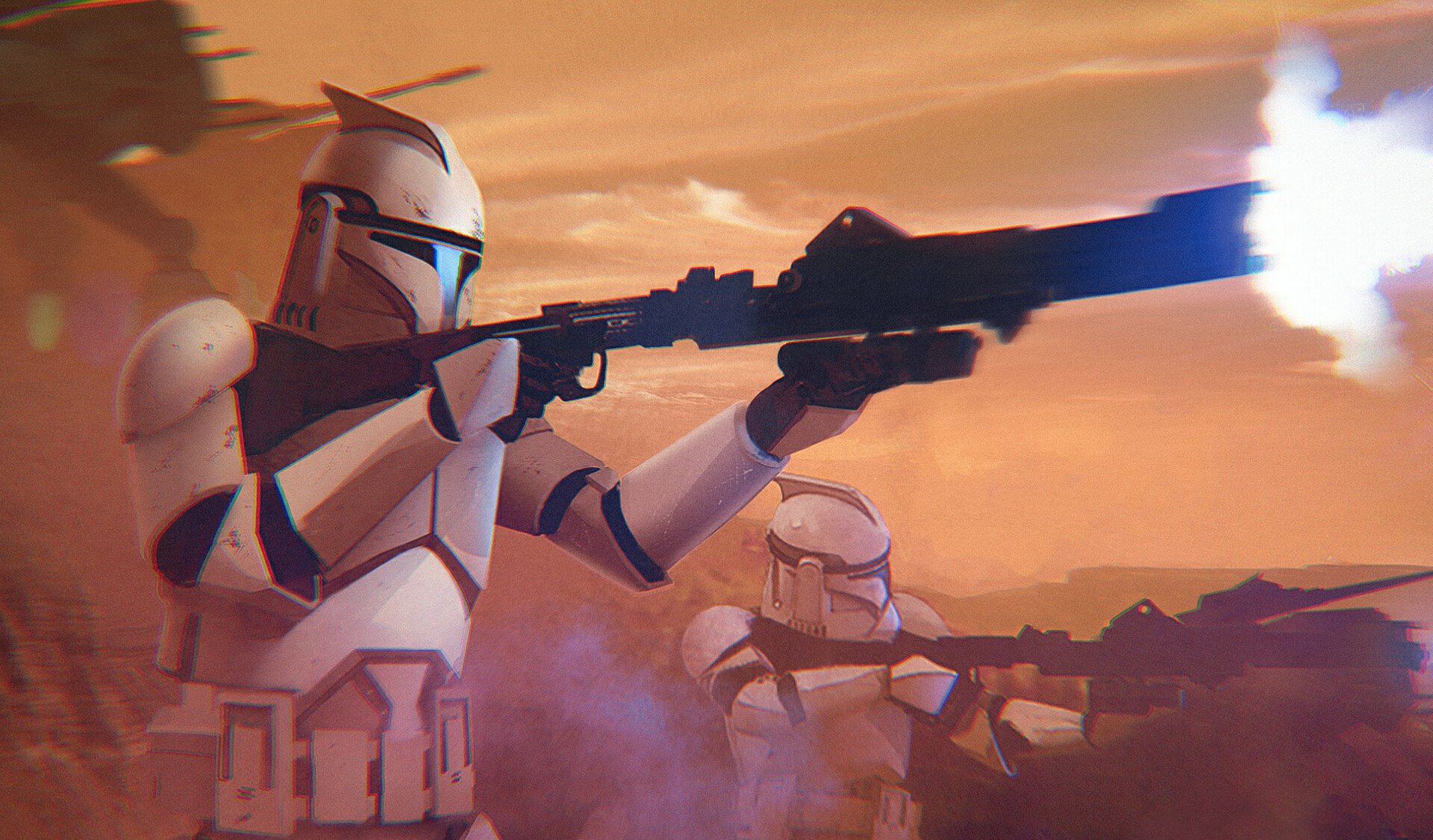
Furthermore, a flip-up optical sight was present at the barrel's end, surrounded by heat-radiator fins. Operation of the DC-15A blaster rifle required tibanna gas cartridges and blaster power packs. Upon trigger activation, a gas release valve would introduce a small quantity of tibanna into the ignition chamber, where it would be converted into plasma via an ignitor, utilizing energy from the blaster's power pack. The plasma would then proceed to the expansion chamber, transforming into a particle beam. This beam would subsequently be amplified via a prismatic crystal and propelled through a galven circuit. Electromagnets would then accelerate the blaster bolt out of the barrel, where magnetic pulse stabilizers and a collimating tube would ensure its stabilization.
The firing sequence generated substantial heat, which was dissipated through the radiator fins and a heat-exchange component located in the muzzle. To reload the power pack, a button had to be pressed to eject the old pack and insert a new one. Replacing the tibanna cartridge necessitated opening the weapon, leaving the user exposed during combat. Consequently, most soldiers opted for high-capacity cartridges to mitigate this vulnerability during reloads.
The DC-15A blaster rifle was characterized by its considerable weight, imbalance, and difficulty in confined spaces. It also suffered from beam cohesion problems after sustained firing, which negatively impacted its accuracy at short to medium ranges. Although capable of automatic fire, slower, more deliberate shots were preferable, enhancing its effectiveness across all distances. Users could adjust its power output, selecting from stun, low, and maximum settings. With the power set to low, the replaceable tibanna gas cartridges could deliver 500 charged plasma bolts, while a fully charged blaster power pack could provide 50 shots, resulting in a total magazine capacity of 550 shots.
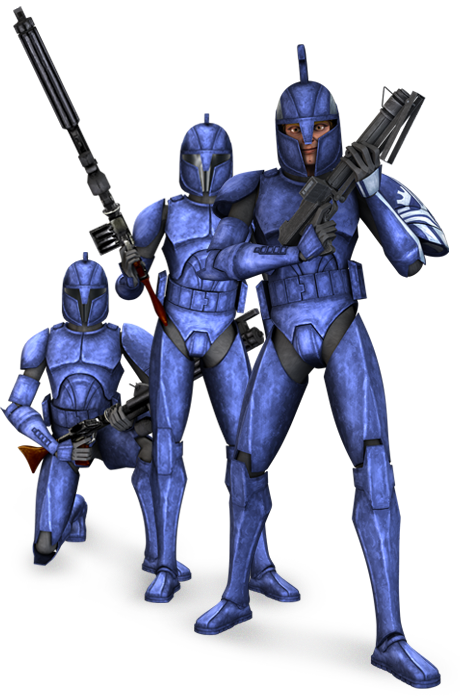
When set to maximum power and equipped with a tripod, the DC-15A could strike a target at a distance of ten kilometers, fire 300 shots, and create a 0.5 meter-wide hole in ferrocrete. It was also capable of penetrating laminate armor from one thousand meters and destroying lightly armored vehicles at closer ranges. Integrating the weapon's targeting systems with the heads-up display of a clone trooper's helmet further enhanced its lethality. Many clone marksmen adopted the DC-15A blaster rifle as their primary weapon, augmenting it with a tripod, gyroscopic stabilizers, and long-range optical systems, complementing the holographic data displayed within their helmets. An ascension cable could also be attached to the blaster.
A specialized DC-15A blaster rifle featuring a wooden stock was designed for the elite Coruscant Senate Commandos. Other variants of the blaster rifle included the DC-15LE, used by heavy weapons clone troopers, and the DC-15x sniper rifle, employed by Advanced Recon Commandos. Galactic Empire's Purge Trooper Commanders and Elite Squad Troopers utilized modified DC-15A blaster rifles that discharged red blaster bolts and incorporated a scope.
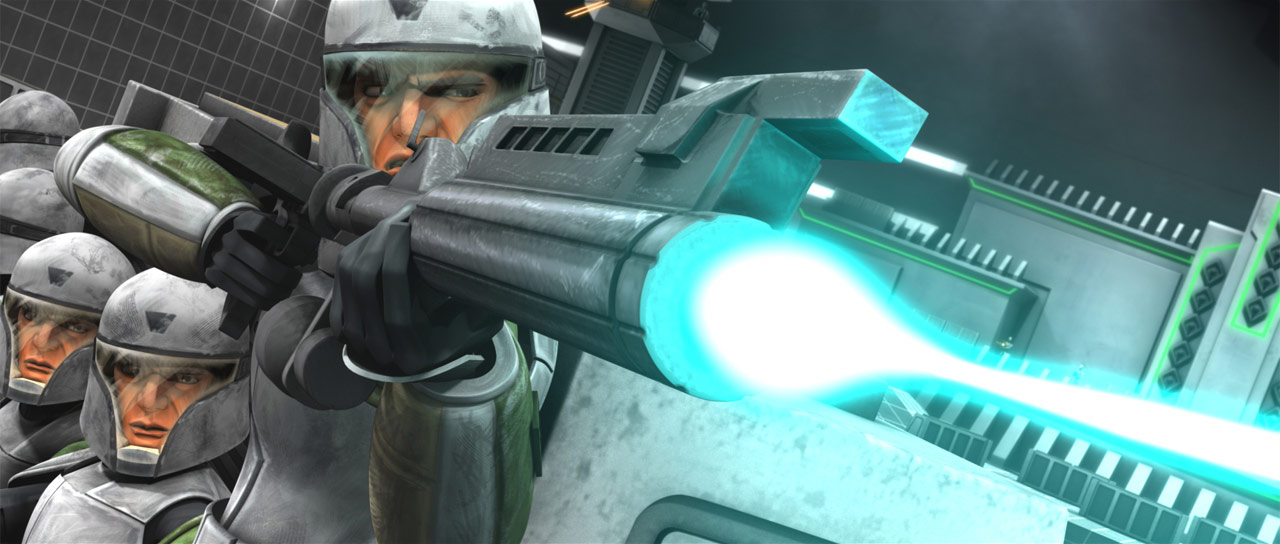
Before the Invasion of Naboo, Jedi Master Sifo-Dyas, a member of the Jedi High Council, foresaw a looming galactic war. Concerned for the Galactic Republic's safety, he proposed the establishment of an army for its defense. After being dismissed from the council, Sifo-Dyas secretly contacted the extragalactic Kaminoans, commissioning them to create an army of clone soldiers, falsely claiming it was for the Republic. Utilizing the DNA of Mandalorian bounty hunter Jango Fett as a template, the Kaminoans commenced the creation of the Grand Army of the Republic.
Given the physical uniformity of clone troopers, weapons and armor did not require variations in size or shape to accommodate individual troopers. Every piece of equipment designed for the Grand Army of the Republic was meticulously crafted to fit each clone trooper perfectly, maximizing their combat effectiveness. The DC-15A blaster rifle, manufactured by BlasTech Industries specifically for the clone army, was a standard-issue weapon, and every clone cadet underwent extensive training with it to become a qualified Republic clone trooper.
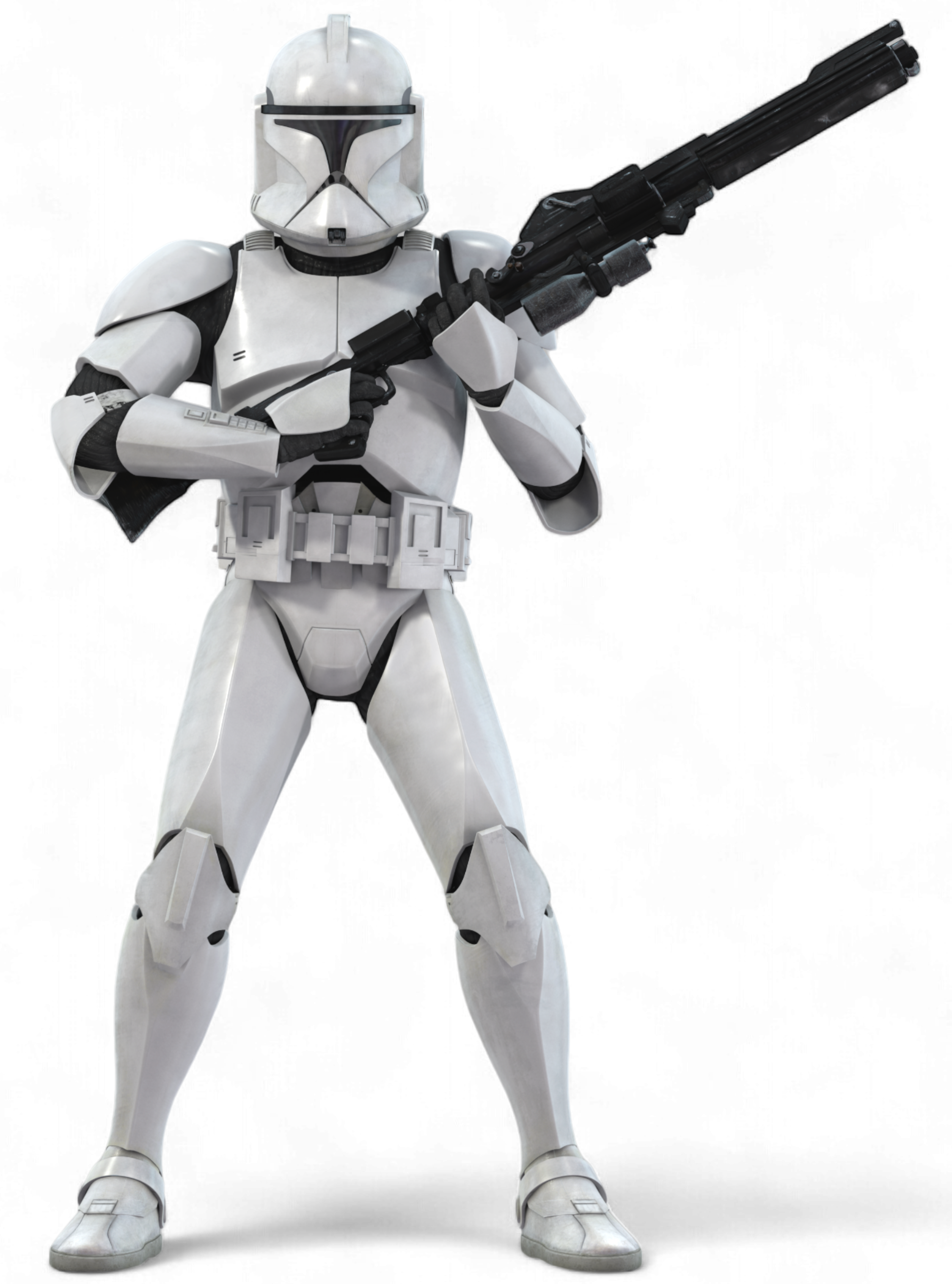
Many clones favored the DC-15A blaster rifle over the smaller DC-15A blaster carbine, including members of the elite 501st Legion, who found it easier to handle. Advanced Recon Force Scout Troopers also preferred the weapon for its superior long-range capabilities. Similarly, certain Clone Commanders favored the DC-15A blaster rifle. Bacara, the commander of the Galactic Marines, had complete confidence in the DC-15A's combat reliability. Cody and Ponds also showed a preference for this weapon.

In 22 BBY, the Galactic Republic engaged Separatist forces on the planet Geonosis, marking the beginning of the Clone Wars. During this battle, Republic clone troopers first used the DC-15A blaster rifle against the Separatist Droid Army, advancing under the leadership of their Jedi Generals. The Galactic Republic successfully defeated the Separatist forces on Geonosis, securing their first victory of the war with the help of this rifle.
Throughout the Clone Wars, the DC-15A blaster rifle remained in use by Republic forces across numerous worlds, including the Battle of Teth, where its ascension cable attachment was first deployed.
After the rise of the Galactic Empire and the execution of the Jedi Order, the DC-15A blaster rifle continued to be used within the new Imperial regime. The Empire's clone stormtroopers continued using the rifle until the E-11 medium blaster rifle was introduced, phasing it out. Many Imperial clone troopers voiced objections to the E-11's introduction, arguing that the DC-15A blaster rifle was more accurate. The DC-15A blaster rifle's design served as partial inspiration for the T-21 light repeating blaster.
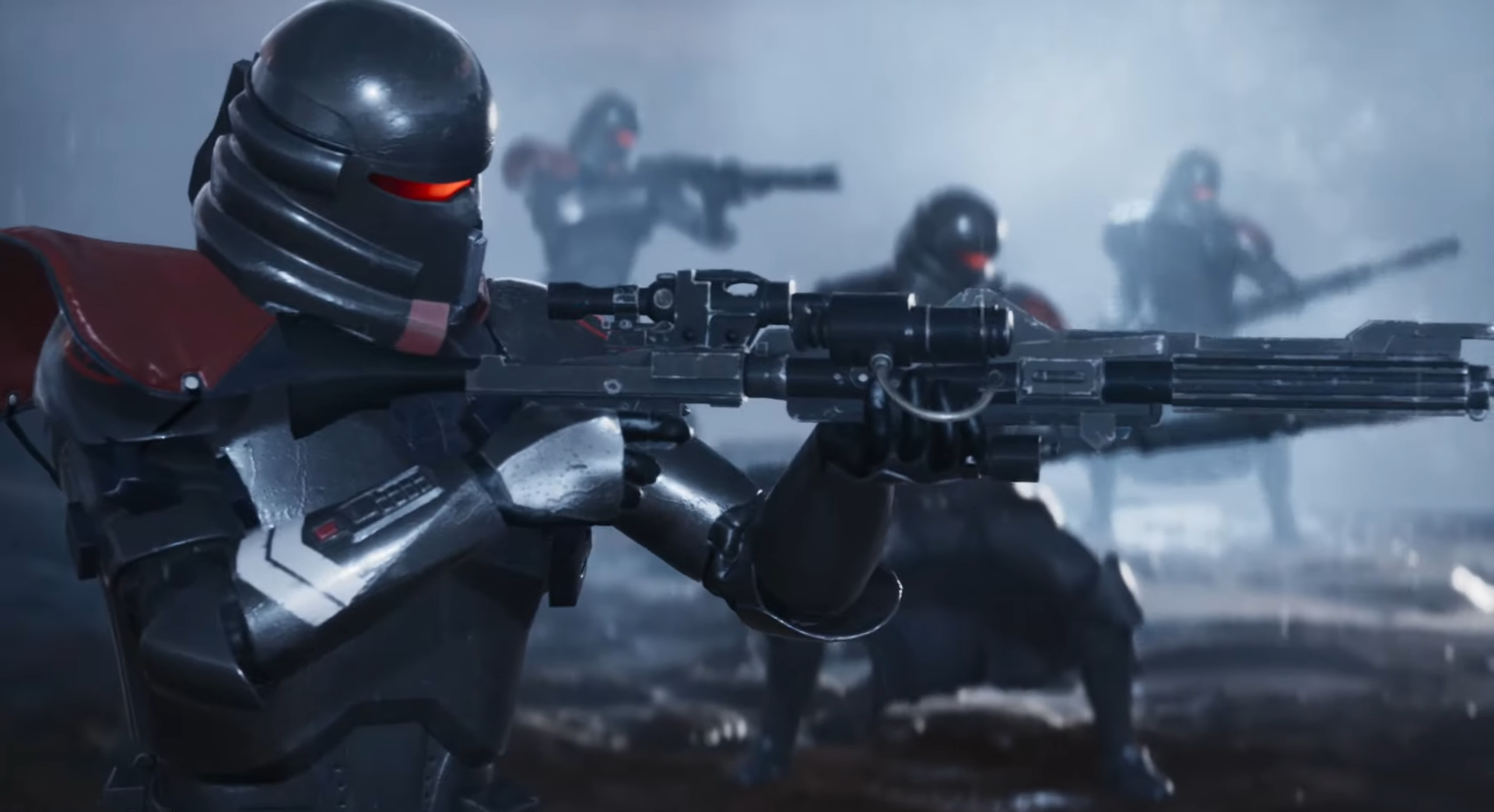
Purge Troopers of the Inquisitorius utilized a modified version of the DC-15A blaster rifle, equipped with a scope and other attachments, that fired red blaster bolts. The Elite Squad Troopers created by the War-Mantle project also used similar modified DC-15A blaster rifles.
The surviving clones Wolffe and Gregor were wielding these weapons when they encountered Ezra Bridger, Kanan Jarrus, Sabine Wren, and Garazeb Orrelios. Upon seeing Kanan Jarrus' lightsaber, Wolffe panicked and fired a few shots which almost resulted in a firefight. Rex convinced him to stand down and Rex apologized to Jarrus for the "weapon malfunction". Rex later used one to snipe a Dwarf probe droid. When they were attacked by an TIE/ln space superiority starfighter, Sabine Wren used a DC-15A to shoot it down.
Shortly after the Battle of Yavin, Chelli Lona Aphra led a group of salvaged BX-series droid commando to attack former Naboo officer Commodex Tahn. He used the blaster to defend himself.
The DC-15A blaster rifle made its first appearance in the new Star Wars Canon in Star Wars: Episode II Attack of the Clones, released on May 16, 2002. Its identification was later confirmed in Ultimate Factivity Collection: Star Wars, an activity book for young readers from Dorling Kindersley, published on June 30, 2014. The DC-15A blaster rifle's name originated in the Star Wars Legends continuity, first identified in Star Wars: Attack of the Clones: The Visual Dictionary, the third book in the Star Wars Visual Dictionaries series, published by Doring Kindersley on April 23, 2002. The design of the DC-15A blaster rifle was inspired by the real-world German MG 34 machine gun.